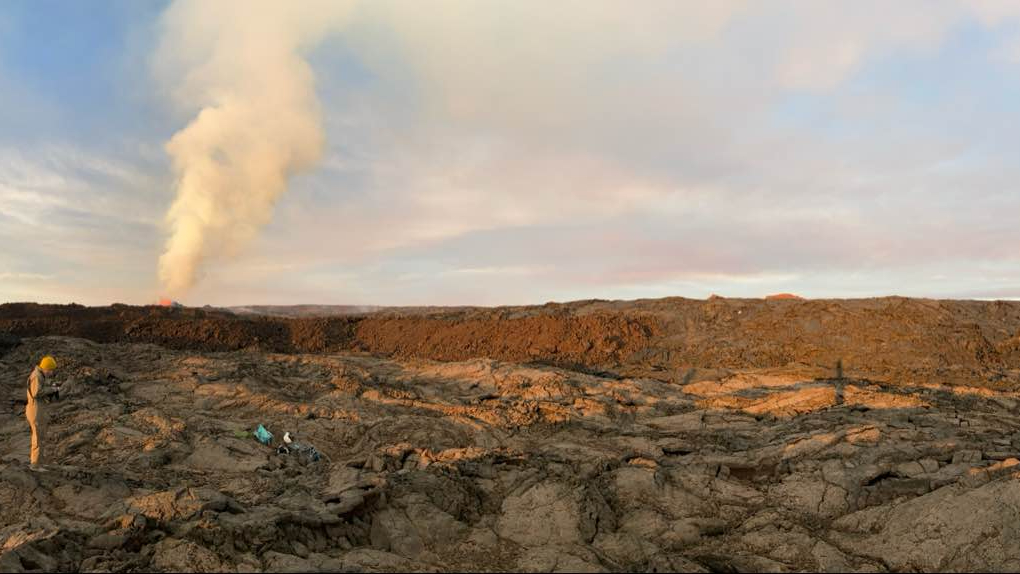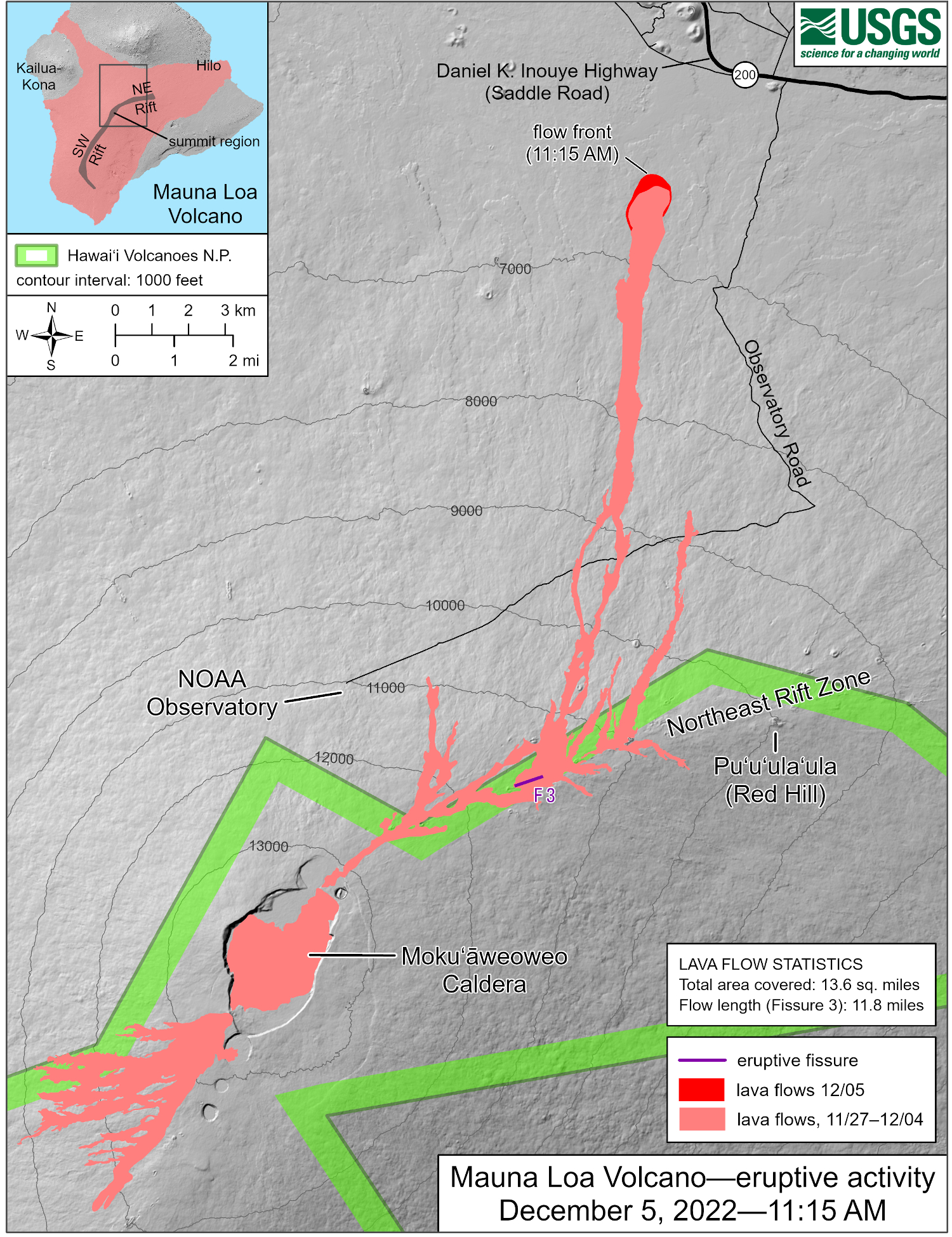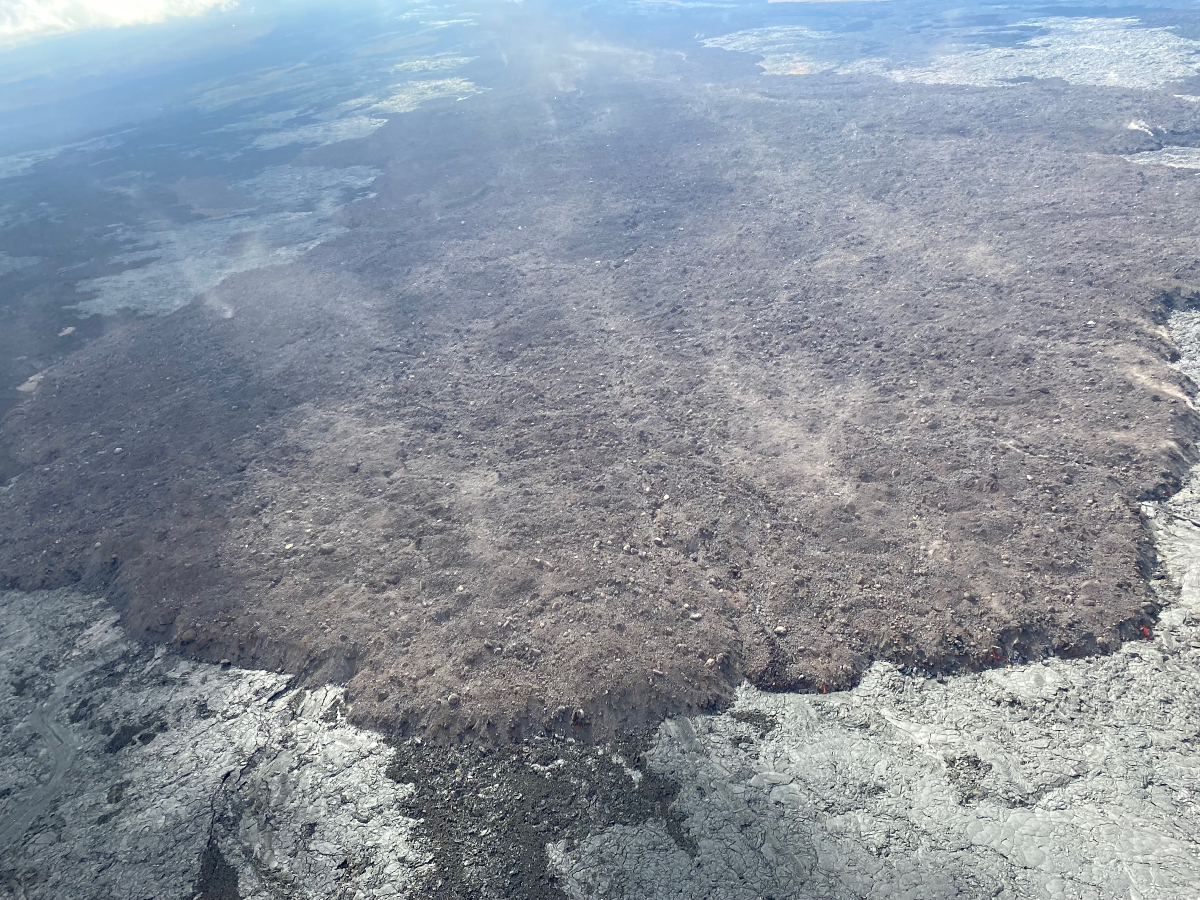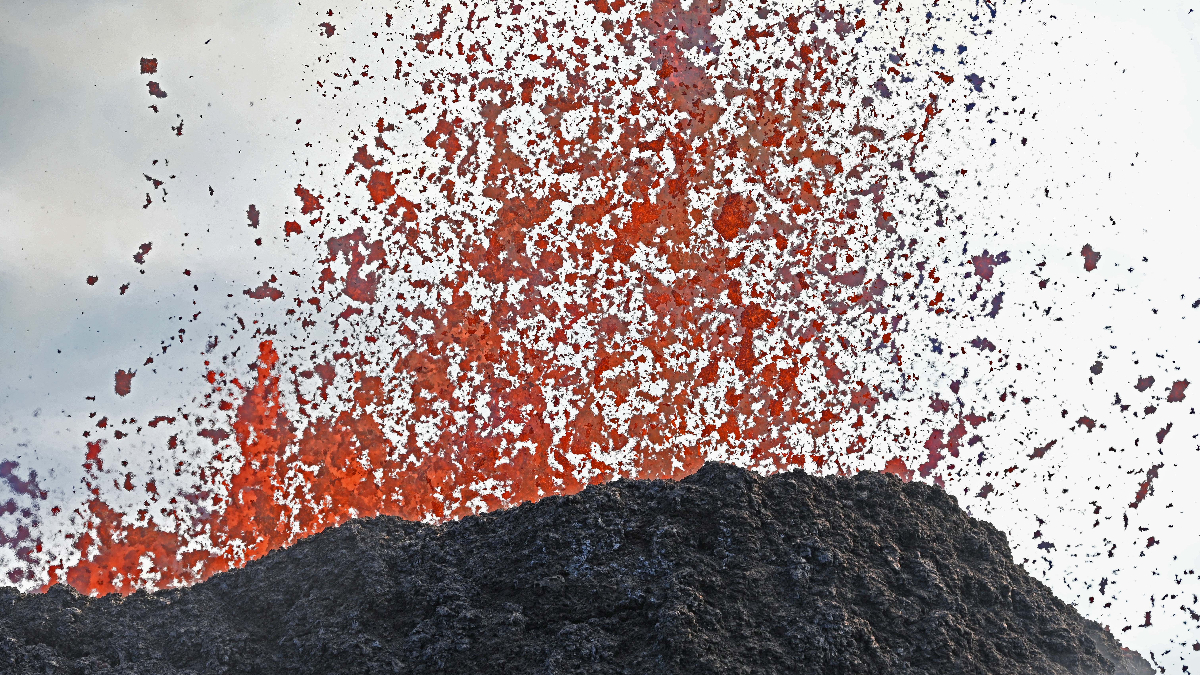
USGS: “Panoramic image showing the fissure 3 lava channel at a high elevation on Mauna Loa’s Northeast Rift Zone. In field, Hawaiian Volcano Observatory scientists measure how fast the lava is flowing. On average, the velocity of lava within the channel is estimated to be flowing at a rate of nearly 10 meters per second (32 feet per second).” (USGS image by H. Dietterich)
UPDATE – (3 p.m. on Monday, December 5)
- The leading edge of the Fissure 3 lava flow is approximately 2 miles from Daniel K. Inouye Highway, which remains open in both directions.
- No communities are currently at risk, emergency officials say.
- The Mauna Loa eruption viewing area along the Old Saddle Road is open. “You are reminded that all areas adjacent to Daniel K. Inouye Highway, and Old Saddle Road, and near the lava flow are CLOSED and prohibited from access to the public,” a Hawaii County Civil Defense message stated. “Please stay in the designated areas to avoid hazards and further closures.”
From the USGS Hawaiian Volcano Observatory on Monday:
The Northeast Rift Zone eruption of Mauna Loa continues. One active fissure, fissure 3, is feeding a lava flow advancing slowly northward toward the Daniel K. Inouye Highway (Saddle Road). The lava flow has reached relatively flat ground causing it to slow down significantly over the past several days, as expected.
As of 6:30 a.m. today, December 5, the flow front was about 2.16 mi (3.5 km) from the Daniel K. Inouye Highway (Saddle Road). There continued to be several small overflows from main channels recorded over the past day. During the past 24 hours, the lava flow advanced at an average rate of about 25 feet per hour (8 meters per hour). Though the advance rate has slowed over the past several days, the lava flow remains active with a continuous supply from the fissure 3 vent.

USGS: “The Northeast Rift Zone eruption of Mauna Loa has continued into its eighth full day. One active fissure, fissure 3, is feeding a lava flow downslope to the north. HVO field crews and USGS analysts have accurately mapped some of the most active flows, displayed in red here, along with older flows further uprift, in part of Mokuʻāweoweo Caldera, and in the upper summit region southwest of the caldera. Lava flow length was measured by tracing an active channel from the December 2, 2022, thermal map and then extending the measurement to the distal lava flow extent measured on this morning’s overflight.”
Advance rates may be highly variable over the coming days and weeks. On the flat ground between Mauna Loa and Mauna Kea, lava flows advance more slowly, spread out, and inflate. Individual lobes may advance quickly, and then stall. Additional breakouts may occur if lava channels get blocked upslope. There are many variables at play and both the direction and timing of flow advances are expected to change over periods of hours to days, making it difficult to estimate when or if the flow will impact Daniel K. Inouye Highway.

USGS: “Aerial photograph of the fissure 3 lava flow front. Fissure 3 is erupting at an elevation of about 11,500 ft (3510 m) above sea level on the Northeast Rift Zone of Mauna Loa. As of 12 p.m. December 4 the flow front had advanced about 10 miles (16 km) downslope and was about 2.25 mi (3.6 km) from the Daniel K. Inouye Highway (Saddle Road).” (USGS photo by L. DeSmither)
Sulfur dioxide (SO2) emission rates of approximately 180,000 tonnes per day (t/d) were measured on December 1, 2022, and remain elevated. Volcanic gas plumes are lofting high and vertically into the atmosphere before being blown to the west at high altitude, generating vog in areas downwind. Vog information can be found at https://vog.ivhhn.org/.
Pele’s hair (strands of volcanic glass) fragments are being wafted great distances and have been reported as far Laupāhoehoe.
Tremor (a signal associated with subsurface fluid movement) continues beneath the currently active fissures. This indicates that magma is still being supplied to the fissure, and activity is likely to continue as long as we see this signal.
There is no active lava within Moku’āweoweo caldera nor the Southwest Rift Zone. We do not expect any eruptive activity outside the Northeast Rift Zone.


by Big Island Video News3:25 pm
on at
STORY SUMMARY
HAWAIʻI ISLAND - The slow-moving lava flow front, advancing at a rate of about 25 feet per hour, was about 2.16 mi (3.5 km) from the Daniel K. Inouye Highway as of this morning.